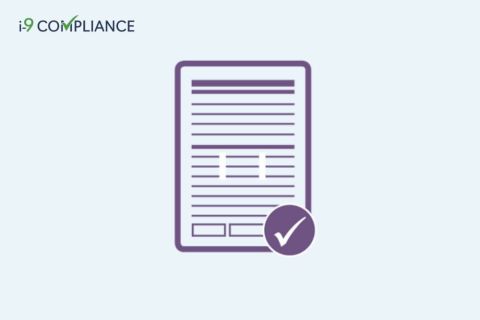Extensions to Employment Authorization Create Increased Complexity Complying With Form I-9 Requirements

Due to labor shortages increasing hiring difficulties for many employers, many employers have switched their efforts to hire foreign national workers Unfortunately, many of these employees, have lost their employment eligibility due to the delays in the government’s ability to process employment authorization renewals.
To deal with this problem, the U.S. Citizenship and Immigration Services has temporarily increased the automatic extension period for employment authorizations for certain classes of foreign nationals. The extension allows for 540 days until October 27, 2023, when the automatic extension returns to 180 days.
This temporary change should be beneficial for many employers. However, any employers who hire these foreign nationals must ensure they fulfill Form I-9 employment eligibility requirements. Failing to comply with the requirements can result in costly penalties.
The Department of Homeland Security increased the fees for Form I-9’s uncorrected technical paperwork violations back on October 18, 2021. As a result, the minimum fine for one violation went from $234 to $237, and the maximum penalty for one violation went from $2,332 to $2,360.
The fines for intentionally hiring workers or continuing to employ them also increased. It went from between $583 and $4,667 to between $590 and $4,722 for first time offenses and from between $4,667 and $11,665 to $4,722 and $11,803 for second offenses. For three or more offenses, the fine increased from $6,999 and $23,331 to $7,082 and $23,607.
The increased fines, along with the temporary extension, make it crucial for employers to ensure that hiring personnel understand Form I-9 employment eligibility requirements and be able to calculate employment authorization dates. To comply with the Form I-9 requirements, given these new challenges, here are a few things to keep in mind:
If an employer hires an employee who has recently reacquired their employment eligibility, they should use the extended expiration date to complete Section 1 on Form I-9. Then, when employers fill out the attestation and review Section 2 of Form I-9, they should list the date on which the automatic extension period expires.
Suppose an employer has employees waiting for extension approval and reverifying their employment eligibility. In that case, the employer should update the Form I-9 the employee filed to show the extended expiration date. This update is based on the automatic Employment Authorization Document (EAD) extension. In addition, employers should reverify the employee’s eligibility before the automatic extension expires.
When an employer completes Form I-9 for an employee whose employment eligibility expires before May 4, they can either complete a new form, or reverify the employee’s EAD on their current Form I-9.
Completing Form I-9 can be complicated due to the frequently changing laws and requirements. One of the best ways to help is to invest in an electronic I-9 management tool. This can guide human resources personnel through every step of the employment eligibility verification process and ensure uniform completion of Form I-9.
Make things a little less complicated for your business by automating your employment eligibility verification and ensuring compliance with I-9 Compliance.